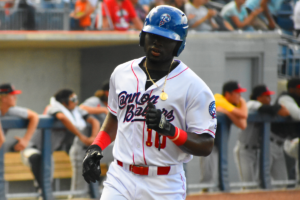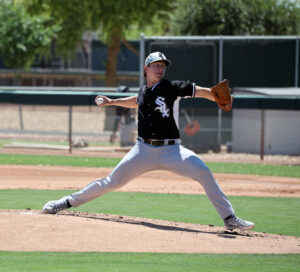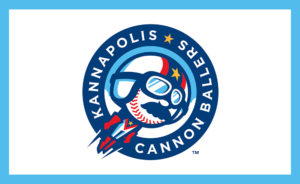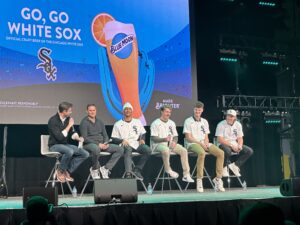Winston-Salem Dash 2021 Season Review
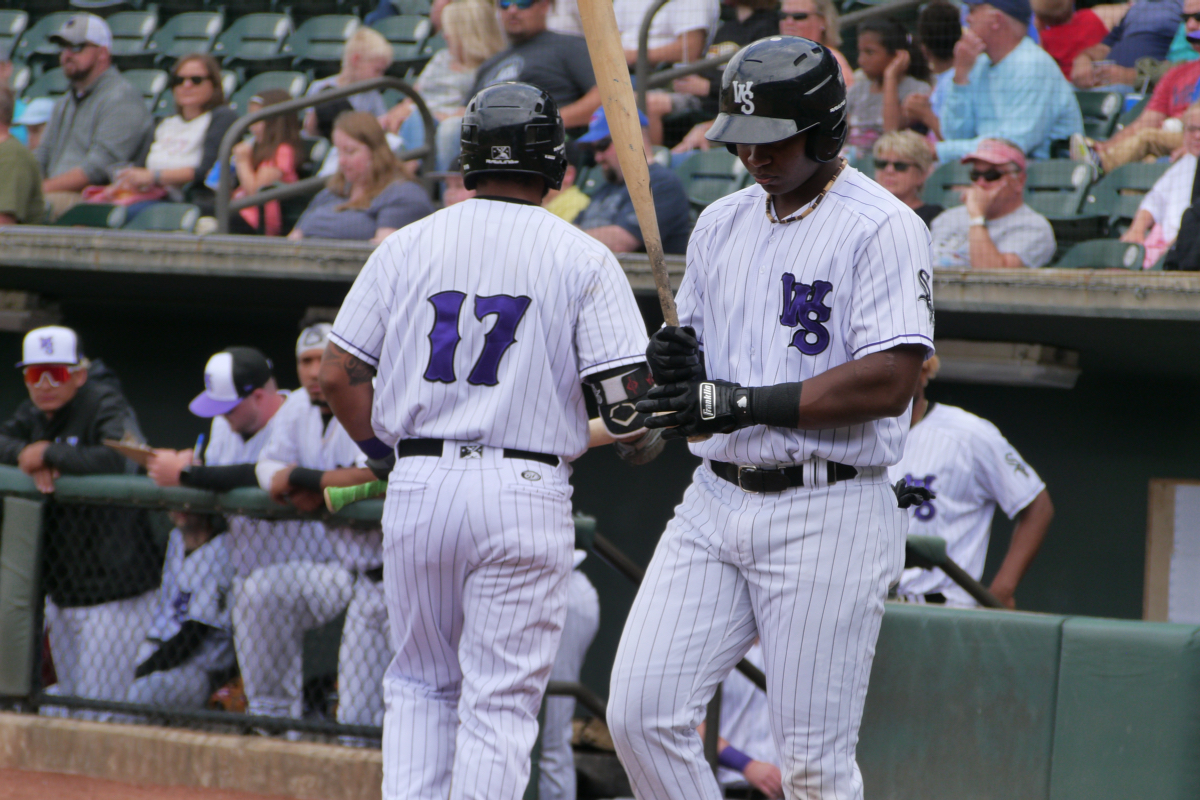
via Anders Johanson
There were highs, there were lows, there were some more lows, and then the season was over: let’s take a look at the Winston-Salem Dash season in review.
After battling to and from .500 all May long and ending the month 12-12, the Dash went 11-15 in June (including a season-high three games over after the first three games of the month), 7-20 in a dire July, and a similarly brutal 8-16 in August (including a seven-game losing streak), with a 5-13 September to wrap it up. They finished the season at 43-76, in last place by 4.5 games.
As a team, they hit .234/.310/.390, that OBP second-lowest in the league. They drew just 380 walks over 119 games, also second-lowest in the league, although they made a lot of contact, ending up in the middle of the pack for strikeouts. The starting pitching staff had an ERA of 5.88 over 439.1 innings (second-highest ERA in the league and lowest number of innings by starting pitchers).
Their bullpen ERA over 572.1 innings was 5.61 (highest ERA and number of innings pitched in the league). They featured 39 different pitchers and the field position that saw the fewest number of different players was shortstop, with four; they fielded seven individual catchers, seven first basemen, eight second basemen, and 12 left fielders, one of whom was Eloy Jiménez on a rehab assignment.
Clearly the numbers are ugly. But they don’t tell the full story. This was perhaps the most uncertain season in minor league baseball history from so many angles.
For example, nobody on the team played professional, organized baseball in a 2020 MiLB season. After promotions and injuries decimated their starting pitching rotation, relievers were called on to start anywhere from one to three games a week. That didn’t prevent players to fit in some outstanding individual performances, however.
Players who struggled
Almost all of them — there’s no avoiding it.
The tiny handful of players everyone expected to perform well did so, more or less, but none of the question marks to start the season turned into exclamation points. Bryce Bush was one of the most interesting prospect names on the roster when the season opened; ranked #19 by FutureSox prior to the season, he was a late-round draft pick out of high school in 2018 who hit very well in the rookie leagues that year but had some injury and vision problems affecting both his bat and defense in the following season.
Those continued this year, as he was able to play just eight games for the Dash — all DH — before going on the seven-day Injured List in May. On July 1, he was assigned to the ACL Sox presumably for a rehab assignment, but he played only one game, was 60-day IL’d over a month later, and did not return. He batted .147/.237/.235 with one home run, four walks, and 13 strikeouts with the Dash and stole two of four bases he attempted.
Luis Curbelo, a 2016 sixth-rounder entering his age 23 season, was another guy to watch coming into the season. His OBP is still not where it needs to be at sub-.300, but he slugged a robust .464. He’s still struggling with contact though — his full slash line over 109 games this season was .223/.290.464, walking 34 times and striking out 152.
He led the team in home runs with 22 and in doubles with 27; he hit five of those homers and three doubles in the first eight games of the season and had a couple of similar and similarly brief hot streaks in his otherwise cool season, so the power is there and accessible. He just needs to figure out how to be consistent (it’s so easy!). Defensively, he spent most of his time at third base, where he made seven errors in 166 chances. Curbelo also DHed 17 games and played second base twice.
Alex Destino had a similar story. The outfielder was drafted a year after Curbelo, but is two years older than him, making him 25 in a league where the average age is about 23. In Kannapolis in 2019, he mashed, batting .298/.376/.476 with 17 home runs and 20 doubles over 112 games. He took a step backwards this year, at .231/.323/.448 in 105 games, although he did increase his dinger output to 21, second only to Curbelo on the team (his doubles fell to 15). He walked 50 times and struck out 131.
It felt like Destino was on the verge of breaking out all season but never quite got there. In 23 games in July, he batted .313/.412/.663 with eight home runs, five doubles, 13 walks, and 27 strikeouts, including a two-game span where he went 7-for-10 with four home runs, including three on July 29 alone. Like Curbelo, though, he wasn’t able to put it all together consistently.
Similar to Destino, Ian Dawkins had a solid 2019 with Kannapolis, batting .298/.361/.396 from the leadoff spot and hitting 38 doubles to boot. Dawkins split this season between Birmingham, where he started and ended, and Winston, where he basically spent June and July. His 28-game line of .246/.315/.360 isn’t that impressive, but that was more offense than the Dash were getting at the time and he temporarily provided a needed bat. His extra-base hits took a tumble, though; he had 43 in 2019 (one triple and four homers on top of the doubles), but between the Barons and the Dash this year, he hit 23 fewer XBH in just 44 fewer games.
One of the several intriguing question marks going into the season was catcher/first baseman Tyler Osik, who hit very decently in injury-limited time between rookie ball and Low-A in 2019 (.274/.349/.456 in 57 total games with 20 doubles, two triples, and five dingers). Unfortunately, that question mark will persist until 2022, when he’ll be 25 years old. Osik only played 24 games for the Dash (and three for the Ballers) before again succumbing to season-ending injury, which has sadly been the story of his career so far. He batted .189/.298/.278 between the two teams.
There were plenty of position players who didn’t break new ground prospect-rankings-wise but still put in time for the team. This was Lázaro Leal’s first season stateside after playing in the DSL in 2019 and he put in an effort to show his versatility, splitting time between first base and left field, with a little right, a little DH, and 2.2 unforgettable innings (as in, I will never forget seeing Lázaro Leal almost give up four home runs in one inning) on the mound.
Travis Moniot set a career high in games played with 61 after being hampered by injuries in 2019, although he did spend a month IL’d this year as well. Caberea Weaver, drafted in the seventh round in 2018, surfaced at the level for the first time for a cup of decaf with the Dash before going back to the Ballers.
Evan Skoug returned to the level for another year after spending 44 games there last year, although he did get the opportunity to get into three games behind the plate and hit a double with the Charlotte Knights. Johan Cruz was another repeat, his third time at the level; he’s been in the Sox system since he was 17 in 2013 and also got to make a brief appearance in Triple-A.
Harvin Mendoza has also been around for a while, 2016 his first Sox season, and still hasn’t shown that he has the power to stick at first base (five home runs in 111 games); he had a down year offensively overall relative to his career stats and could bounce back well next year. Samir Dueñez and AJ Gill also both spent time at first, with Gill moonlighting as an outfielder a couple of times as well.
Brandon Bossard, Roger’s son, played all around the infield, mostly at second base. Jeremiah Burks, Terrell Tatum, and E.P. Reese all contributed as well, and Daniel Millwee, Kleyder Sánchez, Xavier Fernández, and Henri Lartigue all manned the tools of ignorance at various points in the season. Terrell Tatum was the only 2021 position player draft pick to play for the team, appearing in four games in center field and OBP’ing .400.
Luis Robert also played center for four games, and they really could have used him for more.
Pitching-wise, the Dash never really had any big names on the roster, and as the overall pitching stats indicate, very few of them stood out in a good way. Dan Metzdorf, Kaleb Roper, and Chase Solesky were mid-season rotation reinforcements after the initial Dash starting staff was all promoted or injured, but none performed well enough to write home about. Roper had the best two individual performances, one six innings of one-hit shutout ball, the other a 10-strikeout performance over five innings in which he also allowed three runs. Jesus Valles joined the team from Kannapolis later and had a couple of good starts and a couple of rough ones; so did Karan Patel.
Of their initial rotation—Taylor Varnell, Jason Bilous, Davis Martin, Johan Dominguez, and Isaiah Carranza—Dominguez and Martin were the only ones to pitch more than 50 innings for the team. Carranza was injured for the season early on and Bilous, Varnell, and to an extent Dominguez pitched sharply and were promoted.
Martin was promoted as well, but not until later, which the Dash staff probably didn’t mind; his 5.32 ERA was among the lowest of any pitcher who started four or more games. Bailey Horn was the only 2020 draft pick to make an appearance, and he gave up 16 runs in 11 innings before being traded to the Cubs for Ryan Tepera.
In the bullpen, Declan Cronin, a late 2019 draft pick, had amassed a 2.88 ERA over 34.1 innings that year between the Arizona rookie team and Kannapolis, but he didn’t handle the jump to High-A ball smoothly, his ERA inflating to 5.08 over 39 innings (19 walks, 37 strikeouts; this was one of the better ERAs among the bullpen). Weirdly, when he was promoted to Birmingham near the end of the year, he pitched much better there in a much smaller sample size, allowing just two earned runs over 8.1 innings, walking three and striking out six.
Luke Shilling is a prospect who did not struggle on the mound in 2021, but he’s still on this list because of a brutal season-ending injury. Shilling was drafted in 2018 but had never played professionally because of a gruesome Peavy-esque injury involving his lat muscle tearing completely off the bone. After recovering from that and being released and re-signed by the team, Shilling threw 18.1 innings, allowing six earned runs for a 2.95 ERA, walking eight and striking out 27, a 13.3 K/9 rate. He pitched fairly regularly through May and June, pitched one game a month later in July after an initial IL stint, then was gone for the season. The specific injury has not been disclosed.
Most of the rest of the bullpen—and there were a lot of them—fits squarely onto the struggle list. Wilber Perez, Cooper Bradford, Trey Jeans, Edgar Navarro, Ryan Williamson (those five in the pen for the bulk of the season), Sal Biasi, Kevin Folman, Ty Madrigal, Jordan Mikel, and several others who threw a negligible number of innings for the club all ended with ERAs above 5.00.
Players who struggled less
Yolbert Sánchez was hailed as major-league ready upon signing, at least defensively, and he hit well as an old man in the DSL in 2019 (22 years old; .297/.386/.441). After a molasses-laden start in which he batted .194/.286/.210 over his first 19 games with just one extra-base hit, he turned it on and kept it on, hitting .323/.364/.458 for the next 41 games until he was promoted to Birmingham (where he somehow hit even better, .343/.369/.469).
The power is still lacking and may never really come, but he’s shown that he can make contact for base hits, and while he doesn’t walk a lot, he doesn’t strike out much either: 49 total in 99 games between the teams.
There was a lot of preseason mystique surrounding Yoelqui Céspedes, not only because he’s Yoenis’ brother, but because he’s a legitimate prospect in his own right and it took a long time for his visa issues to be cleared up so he could actually be assigned to an affiliate. Finally, he joined the team mid-June, and like Yolbert, had a slow start (4-for-31 with one home run, two walks, and 12 strikeouts in his first eight games, although he was HBP five times) before turning on the juice and finishing out his Dash tenure with gusto, slashing .310/.371/.552 with 17 doubles, six homers, 11 walks, and 44 strikeouts before he was promoted (only three HBP!). He also stole 10 bases in 12 attempts.
Of course, it was hard to avoid the José Rodríguez hype in the latter half of the season, and a lot of that took place in Winston. The 20-year-old shortstop burst onto the prospect scene with consecutive strong seasons as a teenager in the DSL and the Arizona rookie league in 2018 and 2019, making the 2020 COVID year especially excruciating. He has not appeared to miss a beat in 2021, though.
Rodriguez had a little bit of a midseason lull with the Ballers but still hit .283/.328/.452 over 78 games with 22 doubles, four triples, nine home runs, and 21 walks to just 57 strikeouts (not to mention 20 stolen bases in 25 attempts. How many tools is that?). This was good enough to bump him up to the Dash, and although he played in just 29 games for the team before another promotion, they left an impression: he hit .361/.381/.538 with four home runs and stole 10 bases in 15 attempts. He walked only five times, but struck out only 13. He had multiple hits in 16 of those 29 games.
Lenyn Sosa should have been at Winston-Salem in 2020, so he had to wait until this year to experience High-A; luckily, at age 21, he was still about two years younger than the league, and luckily, he did not seem to have much trouble from the year-long layoff. In 82 games before his own promotion to the Barons, he put up a .290/.321/.443 slash line and set a career-high in home runs with 10. As is traditional for Sox prospects, he ran into a wall for the last month of Double-A ball, but spending an age-22 season there isn’t bad at all.
Gunnar Troutwine had a sneakily good year. In the past, there have been questions about his defense behind the plate and the ability to repeat his strong batting season from his rookie year, 2018. While neither question has been fully answered—especially given the difficulty of evaluating minor league defense from a state page—he made strides in both areas. In 2018, he had a 24% caught-stealing rate, and that somehow fell to 21% in 2019.
This year, though, in a short stint with the Barons and much longer one with the Dash, he threw out 32% of baserunners. He improved his fielding percentage slightly as well, going from .982 to .988. Meanwhile, his bat stayed productive: in 47 games in Winston, he batted .272/.390/.435, hitting nine doubles and five home runs. He walked 26 times and struck out 45.
A few players bounced up and down between Winston-Salem and Kannapolis over the year, and Luis Mieses was one of them. Just 20 years old when the season started (he turned 21 on the last day of May), he hit a three-run bomb on opening day but then slumped mightily, going 11-for-71 with three walks and 19 strikeouts in 19 games before being demoted down to the Cannon Ballers.
There, he immediately turned into one of their top hitters, slashing .305/.347/.463 over 52 games, and when he came back, he kind of brought that with him. Turning into a doubles machine, he hit 15 of them over the last 39 games of the season for the Dash, accompanied by a triple and six home runs; he only walked eight times but only struck out 29 times, slashing .275/.319/.510 over that last month and a half to rehabilitate his overall season line from .155/.189/.366 to .236/.278/.464, no easy task.
Jagger Rusconi was another, the 25-year-old hitting .260/.327/.380 at a time during the season when the Dash needed it the most. He’s been in pro ball since 2015 and played at four different levels this year for the Sox.
You’ve seen the pitching stats and they’re not good, but there were a few pleasant surprises there. Luke Shilling, of course, was one before his season-ending injury. Brian Glowicki was another, 26 years old but striking out 16.7 per nine (55 Ks in 29.2 innings, although he also walked eight and gave up a decent number of hits). Sammy Peralta also wasn’t terrible, one of the few relievers with an ERA starting with a four.
Caleb Freeman was another, the 2019 15th-rounder establishing himself firmly on the relief prospect scene with a good year out of the bullpen. He struck out 33 over 27.1 innings, walking 14 and allowing 11 earned runs for a 3.62 ERA. He did allow five dongs, meaning he’ll fit in with the big league club just fine. The fireballing McKinley Moore, another mid-round 2019 pick, allowed six runs in his first five games, striking out just seven, then went 13 IP, 13 H, 2 R, 3 BB, 17 K the rest of the way (1.38 ERA). Yoelvin Silven impressed in limited time, a minuscule 0.846 WHIP over 13 innings, and so did Lane Ramsey, who allowed two earned runs in 11 innings, striking out 13. The only drafted-in-2021 pitcher to make the club was Taylor Broadway; it was short but sweet, six strikeouts over six innings, two earned runs and one walk.
Taylor Varnell was their best starter, striking out 61 over 56 innings with a 2.89 ERA and 1.071 WHIP, but he retired abruptly near the end of the season a few weeks after he was promoted to the Barons. Jeremiah Burke came out of nowhere (the 17th round for the 2019 draft) to put up a 3.18 ERA (1.059 WHIP) over 34 innings, his season disrupted by multiple IL stays. Johan Dominguez had a better start to his season with the Dash than end, but he maintained the all-important sub-five-ERA (4.80), striking out 74 and walking 17 in 65.2 innings.
Photo credit: Anders Johanson/FutureSox
Want to know right away when we publish a new article? Type your email address in the box on the right-side bar (or at the bottom on a mobile device) and click “create subscription.” Our list is completely spam free, and you can opt out at any time. Also, consider supporting FutureSox on Patreon! You can get early access to special articles and Patreon-only posts, in addition to more benefits.
Shop our exclusive merchandise! Show your support with FutureSox apparel.

